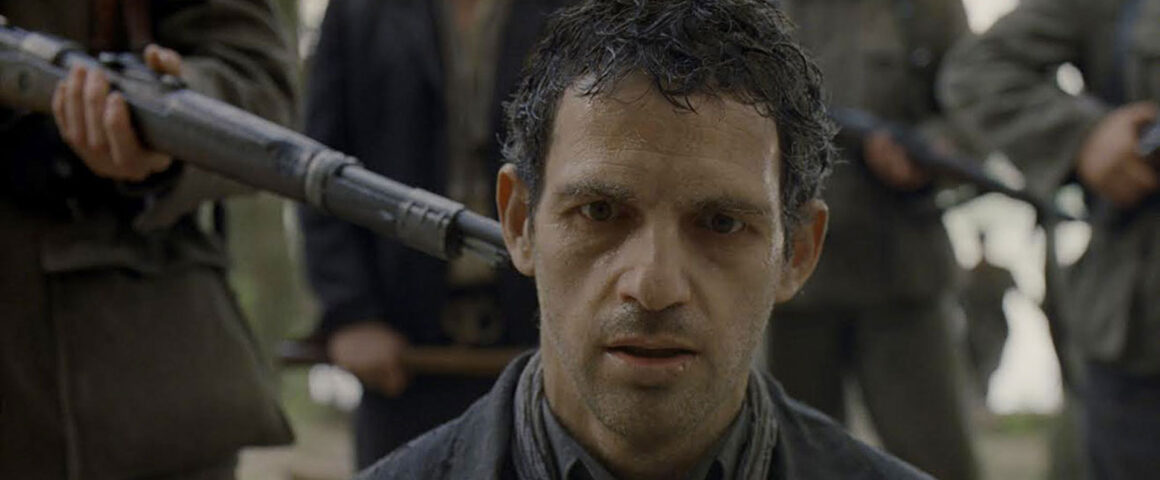While no movie can fully capture the madness of what life in a concentration camp must have been like, László Nemes’ Cannes Grand Prize Award winning Son of Saul, his first feature film, may come close to recreating the experience. Written by the director and Clara Royer and shot in 35mm with a 4:3 aspect by cinematographer Mátyás Erdély (“The Quiet Ones”), Son of Saul explores the moral dilemma of a group of Hungarian Jews known as the Sonderkommandos who were forced to collaborate with the Germans at Birkenau in exchange for preferential treatment in the way of food and living arrangements, even though the bargain extended their lives for only a few months.
Set in 1944 only months away from liberation, Géza Röhrig is Saul Auslander, a Sonderkommando, inducted on his arrival at Auschwitz-Birkenau under the threat of death and given the task of emptying trainloads of new prisoners, telling them lies about fresh coffee and an offer of employment after their shower, then, under the supervision of the SS, shutting the doors and standing to one side, listening to the screaming and crying. Saul’s job does not end there, however. He is charged with removing the bodies, referred to as “pieces,” from the gas chambers, confiscating any valuables they may have, and incinerating them in outdoor pits.
With the camera always focused on Saul, breathing down his neck like the Dardenne Brothers’ camera in “The Son,” he moves around swiftly going from one job to the next showing little outward emotion among the confusion. He stops long enough, however, to witness the body of a young boy still breathing after having survived the gas chamber. He will not remain alive for long, however, as he is quickly smothered by the camp doctor and his body removed for an autopsy. Apparently recognizing the boy and claiming him to be his son, Saul’s seeks a Rabbi who will say the prayer for the dead (Kaddish) and give the boy the required burial according to Jewish law and tradition.
When he is not performing business as usual, Saul’s desperate attempt to find a Rabbi takes up much of his time and he is accused by a fellow prisoner of being more concerned with the dead than with the living. Though there is no narration and a minimum of dialogue (spoken in a mix of Hungarian, German, and Yiddish), Saul’s expressive face reveals a cauldron of intense emotion, more than any language could hope to reveal. We never learn anything about Saul’s background, whether he was married or even had a son, but, in his desire to provide Kaddish for the boy, he is asserting his humanity in the face of barbarism.
It is a daunting task given the circumstances of the arrival of more victims daily, and the clandestine plans being made for a prisoner rebellion, an extraordinary example of physical resistance but it is Saul’s singular act of rebellion that adds a dimension to the suffering that transcends its apparent meaninglessness. Unlike Tim Blake Nelson’s 2001 film, “The Grey Zone” which covered similar territory but succumbed to standard Hollywood treatment, Nemes keeps graphic content to a minimum and relies on the viewer’s imagination, wisely letting the horrors to be assimilated through suggestion and an intentionally raucous soundtrack. Son of Saul is not an easy film to watch, but it is an important and even a necessary one and, in its own way, both a horrifying and strangely beautiful one. It is a film that should not be missed.




'Movie Review: Son of Saul (2015)' has 1 comment
October 12, 2015 @ 9:27 pm Leah
Wonderful review, Howard. Looks like a movie that can deeply affect one to their core.